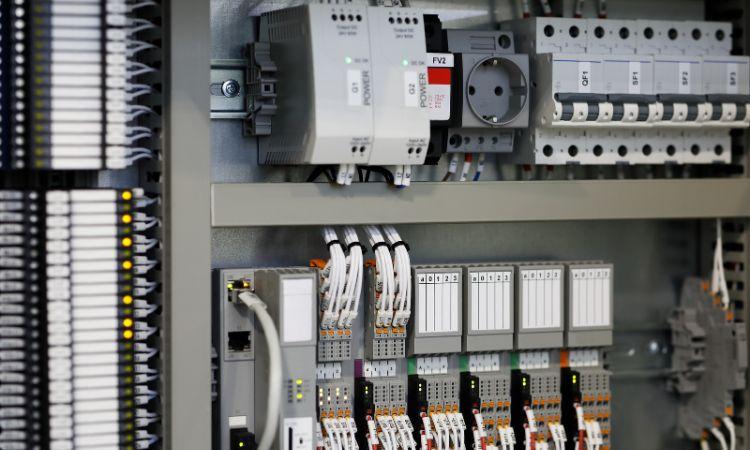The global microgrid controller market size attained approximately USD 5.45 billion in 2023. The market is estimated to grow at a CAGR of 21% in the forecast period of 2024-2032, reaching a value of around USD 30.42 billion by 2032. This significant growth is driven by the increasing adoption of renewable energy sources, the growing demand for reliable and resilient energy systems, and continuous advancements in microgrid controller technology.
The Brains Behind the Microgrid: Understanding Microgrid Controllers
Microgrids are self-contained power systems that can operate independently from the traditional electrical grid. They combine various distributed energy resources (DERs) like solar panels, wind turbines, and battery storage to provide power to a localized area. But how do these diverse components work together seamlessly? Enter the microgrid controller.
Think of a microgrid controller as the brain of the microgrid. It's a sophisticated device that automates and optimizes the entire microgrid operation. It constantly monitors the system, ensuring optimal energy production from DERs, manages power flow, and maintains grid stability by controlling frequency and voltage. In essence, microgrid controllers ensure efficient, reliable, and secure power delivery within the microgrid.
Navigating the Microgrid Controller Market Landscape
The Microgrid Controller Market is a burgeoning space with established players and emerging companies vying for a piece of the pie.
Major Players and Their Strategies:
- Established giants: Leading the pack are companies like Schneider Electric, General Electric (GE), ABB, and Siemens. These players leverage their extensive experience in power systems and automation to develop advanced microgrid controller solutions.
- Market disruptors: Companies like AutoGrid and Heila Technologies are making waves with innovative control systems that utilize artificial intelligence (AI) and machine learning (ML) for enhanced grid optimization and predictive maintenance.
Understanding the Market Dynamics
The Microgrid Controller Market is propelled by several key drivers:
- Renewable Energy Integration: The increasing adoption of renewable energy sources like solar and wind necessitates microgrids for managing their variable power output. Microgrid controllers play a crucial role in integrating these renewables seamlessly into the grid.
- Demand for Reliable Power: Businesses and communities are increasingly seeking reliable and resilient power solutions, especially in areas prone to grid outages. Microgrids, with their ability to operate independently, offer a compelling solution.
- Technological Advancements: Continuous advancements in microgrid controller technology, including improved communication protocols and cyber security features, are making these systems more robust and user-friendly.
However, the market also faces challenges:
- High Costs: The initial investment costs associated with deploying microgrid controllers can be high, hindering wider adoption, especially for smaller projects.
- Integration Challenges: Integrating microgrids with existing grid infrastructure can be complex, requiring collaboration between various stakeholders.
- Regulatory Uncertainty: The regulatory landscape surrounding microgrids is still evolving in some regions, which can create uncertainty for investors and developers.
Market Segmentation: A Closer Look
The Microgrid Controller Market can be segmented based on various factors:
- Type of Microgrid Controller:
- Grid-tied: Designed for microgrids connected to the main grid but capable of islanding (operating independently) during outages.
- Off-grid: Suitable for remote locations with no access to the main grid.
- Hybrid: Combines features of both grid-tied and off-grid systems.
- Application:
- Residential: Cater to the needs of individual homes or communities.
- Commercial: Serve businesses and commercial establishments.
- Industrial: Designed for industrial facilities with high energy demands.
- Region: The Asia Pacific region is expected to witness significant growth due to government initiatives promoting renewable energy and growing urbanization. North America and Europe are also projected to be major markets.
The Importance of Microgrid Controllers in the Future of Energy Management
Microgrid controllers are more than just sophisticated devices; they represent a paradigm shift in energy management. They empower communities and businesses to take control of their energy needs, fostering a more decentralized and sustainable energy future.
Here's how microgrid controllers contribute to a transformed energy landscape:
- Increased Renewable Energy Integration: By optimizing the integration of renewable energy sources, microgrids with their intelligent controllers contribute to a cleaner and more sustainable energy mix.
- Enhanced Grid Resilience: Microgrids can operate independently during outages, providing critical backup power and improving overall grid resilience.
- Improved Energy Efficiency: Microgrid controllers optimize energy use within the microgrid, minimizing energy waste and promoting efficient power consumption.
- Empowering Consumers: Microgrids empower consumers to participate actively in the energy market, potentially allowing them to sell excess power back to the grid.
Future Outlook: A Glimpse into the Evolving Landscape
The Microgrid Controller Market is brimming with exciting developments:
- Emerging Trends: The convergence of Internet of Things (IoT) and AI with microgrid controllers will enable real-time data analysis and predictive maintenance, further enhancing grid performance and reliability.
- Technological Advancements: Advancements in battery storage technology will make microgrids even more attractive, fostering wider adoption.

